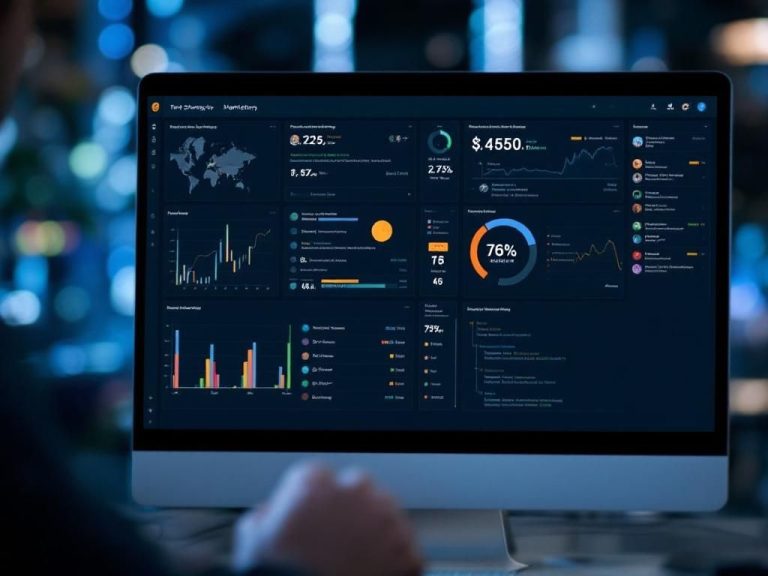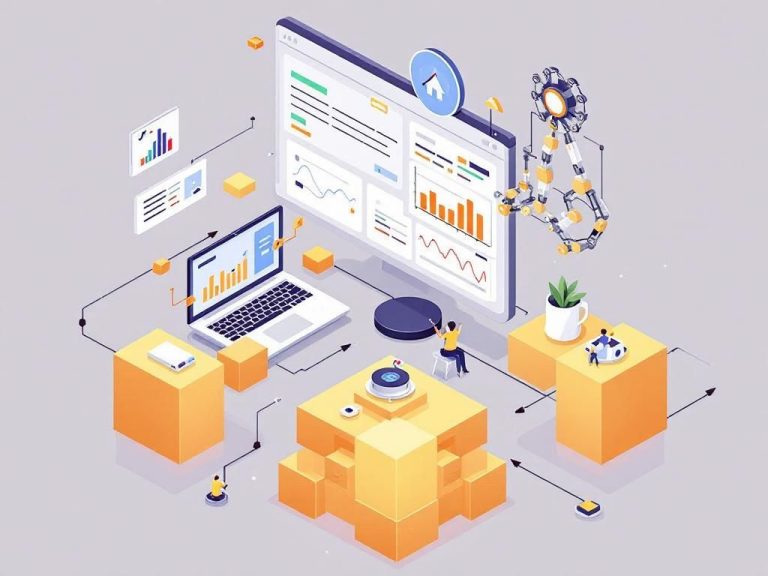As the landscape of technology continues to evolve, machine learning (ML) is becoming increasingly indispensable for a wide array of applications, particularly in edge computing. By processing data closer to where it is generated, edge devices can significantly reduce latency, enhance privacy, and optimize bandwidth usage. In 2025, a variety of ML platforms have emerged, designed to cater specifically to the needs of edge devices, making them more efficient, robust, and scalable. This article explores these leading platforms, their unique features, and the transformative impact they are having on industries around the globe.
Understanding Edge Computing and Machine Learning
Before delving into the specific platforms, it’s crucial to understand the synergy between edge computing and machine learning. Edge computing refers to the process of performing data processing at or near the source of data generation. This contrasts with traditional cloud computing, where data must be sent to centralized servers for processing. Here’s why this combination is vital:
- Reduced Latency: Processing data at the edge minimizes the time it takes for data to be analyzed and acted upon.
- Improved Privacy and Security: Sensitive data can be processed locally, reducing the risk of exposure during transmission.
- Bandwidth Optimization: Less data needs to be sent to the cloud, which alleviates congestion and reduces costs.
Key Characteristics of ML Platforms for Edge Devices
When evaluating ML platforms tailored for edge computing, several characteristics stand out:
- Scalability: The ability to handle increases in data load without a significant drop in performance.
- Interoperability: Seamless integration with various hardware and software ecosystems.
- Real-time Processing: The capability to analyze data in real time or near real time.
- Model Optimization: Support for lightweight models that are efficient in both memory and processing power.
Leading ML Platforms for Edge Devices in 2025
The following ML platforms have emerged as leaders in edge computing, each offering unique features that cater to various industry needs:
1. TensorFlow Lite
TensorFlow Lite is a lightweight version of Google’s TensorFlow framework, specifically designed for mobile and edge devices. It enables developers to run machine learning models on devices like smartphones and IoT devices efficiently.
Key Features:
- Support for a wide range of models trained in TensorFlow.
- Optimized for both performance and size, making it ideal for edge applications.
- Rich documentation and a strong community support system.
2. Apache MXNet
Apache MXNet is a scalable deep learning framework that supports distributed training and is optimized for efficiency. Its flexible syntax allows developers to build complex models easily.
Key Features:
- Supports multiple programming languages including Python, Scala, and Julia.
- Dynamic computation graphs for on-the-fly model adjustments.
- Efficient memory usage, making it suitable for edge devices.
3. Edge Impulse
Edge Impulse is a machine learning platform focused on embedded devices. It provides developers with tools to create, deploy, and monitor machine learning models efficiently.
Key Features:
- Integration with a variety of hardware platforms and sensors.
- End-to-end workflow from data collection to deployment, simplifying the ML process.
- User-friendly interface catering to both experienced and novice developers.
4. AWS IoT Greengrass
AWS IoT Greengrass extends the functionality of AWS cloud services to edge devices, allowing local execution of AWS Lambda functions, messaging, and data management.
Key Features:
- Integration with other AWS services for seamless cloud connectivity.
- Support for offline operation, enabling devices to function without constant internet access.
- Machine learning inference capabilities at the edge, enhancing responsiveness.
5. Microsoft Azure IoT Edge
Microsoft Azure IoT Edge allows users to deploy cloud workloads such as AI, Azure services, and custom logic directly on IoT devices.
Key Features:
- Containerized applications for flexible deployment and scaling.
- Integrated with Azure machine learning for powerful data analytics.
- Enterprise-grade security features to protect sensitive data.
Comparative Analysis of Key Platforms
| Platform | Main Use Case | Key Strength | Supported Languages |
|---|---|---|---|
| TensorFlow Lite | Mobile and IoT | Performance and size optimization | Python, C++ |
| Apache MXNet | Distributed deep learning | Flexibility and efficiency | Python, Scala, Julia |
| Edge Impulse | Embedded systems | User-friendly interface | Python |
| AWS IoT Greengrass | Device integration | Cloud service extension | Multiple (via Lambda) |
| Microsoft Azure IoT Edge | Enterprise IoT | Containerization and security | C#, Python |
Challenges and Considerations
While the benefits of ML platforms for edge devices are clear, there are also challenges that developers and organizations must navigate:
- Resource Limitations: Edge devices often have limited compute power and storage, which can restrict model complexity.
- Data Privacy: Local processing is advantageous, yet developers must ensure compliance with data protection regulations.
- Maintenance: Keeping models updated and relevant as data and conditions change is crucial and can be resource-intensive.
The Future of Machine Learning on Edge Devices
Looking ahead, the future of machine learning on edge devices seems promising. Advancements in hardware, such as specialized chips for ML tasks, will continue to enhance the capabilities of edge computing. Additionally, as 5G technology rolls out, the connectivity for edge devices will improve, allowing for even more sophisticated applications.
Organizations across various sectors, from healthcare to manufacturing, are already leveraging these technologies to streamline operations, reduce costs, and improve customer experiences. As ML platforms evolve, they will undoubtedly play a central role in shaping the future of technology in a wide range of industries.
In conclusion, the leading ML platforms for edge devices in 2025 are paving the way for a new era of computing, where machines can analyze and act upon data in real-time, right where it is generated. By embracing these innovations, businesses can stay ahead of the curve and harness the full potential of their data.
FAQ
What are the leading ML platforms for edge devices in 2025?
Some of the leading ML platforms for edge devices in 2025 include TensorFlow Lite, Apache MXNet, Edge Impulse, and NVIDIA Jetson.
How does edge computing enhance machine learning performance?
Edge computing enhances machine learning performance by processing data closer to the source, reducing latency, minimizing bandwidth usage, and improving real-time decision-making.
What are the benefits of using machine learning platforms on edge devices?
The benefits include faster processing times, reduced cloud dependency, enhanced privacy and security, and the ability to function in remote or offline environments.
Can edge devices support complex machine learning models?
Yes, many edge devices are now capable of supporting complex machine learning models thanks to advancements in hardware and optimized software frameworks.
What industries are adopting machine learning platforms for edge devices?
Industries such as healthcare, manufacturing, automotive, and smart cities are increasingly adopting machine learning platforms for edge devices to leverage real-time data analytics and automation.
How can I choose the right ML platform for my edge device?
Choosing the right ML platform for your edge device involves considering factors like compatibility, scalability, model complexity, and specific use-case requirements.




